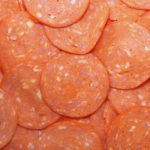By Bonnie Jenkins, Advanced Natural Wellness
I just finished one of the most fascinating books I’ve ever read. My Stroke of Insight by Jill Bolte Taylor is the story of a 37-year-old Harvard-trained brain scientist who experienced a massive stroke when a blood vessel exploded in the left side of her brain. A neuroanatomist by profession, she detailed the experience of watching her own mind completely deteriorate to the point that she could not walk, talk, read, write, or recall any of her life, all within the space of four brief hours.
Fortunately, Taylor was able to recognize what was happening and got help quickly. But would you know if someone – maybe yourself – were having a stroke? And could you get the proper care to minimize the damage?
Warning Signs
When stroke symptoms occur, quick action is vital. Warning signs can begin anywhere from a few minutes to days before a stroke. If you think you or someone with you is having a stroke or a transient ischemic attack (TIA), seek immediate medical attention. If you can’t reach your doctor by telephone, go to a hospital emergency room – preferably one that specializes in treating acute stroke. If you know you are at risk for stroke, find out ahead of time the name and location of the nearest hospital that specializes in treating acute stroke.
Even if you aren’t knowingly at risk, it’s smart to become familiar with the symptoms that can herald a stroke. If you experience any of the following symptoms, call 911 immediately or go to an emergency room.
- Weakness in an arm, hand, or leg
- Numbness on one side of the body
- Sudden dimness or loss of vision, particularly in one eye
- Sudden difficulty speaking
- Inability to understand what someone is saying
- Dizziness or loss of balance
- Sudden, excruciating headache
Time is of the essence when you’re having a stroke. The sooner you get medical attention, the better your chances of recovery. Since the 1980s, researchers have developed rapid, safe, and effective diagnostic techniques that accurately identify the extent and location of a stroke and the nature of the vascular problem causing it. The goal of treatment is to restore blood circulation before brain tissue dies. The time frame for reaching this goal is frighteningly slim. Treatment usually has to begin within 60 minutes of a stroke to prevent brain-cell death that is significant enough to cause disability.
MD Exposes the Hidden Danger to Your Eyes

When your eyesight starts to fail, it's a real problem. Suddenly you can't go to the grocery store... you can't get to the doctor if you have an emergency... you can't meet your friends for dinner…
Your "regular" doctor doesn't have time to keep up with the latest research. And the same goes for eye doctors. They go to school to learn how to fit you for glasses and contacts, but have no way of preventing the damage and loss of eyesight that threatens your freedom and independence.
Let me show you something that explains a LOT about how your eyes work.
In my FREE Special Report, I'll show you a HUGE, untapped resource for your eyes that safely and naturally restores clear, effortless eyesight.
Click here to get started...
One of the main clot-dissolving drugs, recombinant tissue plasminogen activator (tPA), is best given early. People treated with tPA one hour after the onset of a stroke were more than three times as likely to survive with few disabilities compared with those treated two hours after stroke onset, according to two trials sponsored by the National Institute of Neurological Disorders and Stroke. An important goal of research is to find treatments that can buy time by protecting the patient’s brain until blood circulation is restored, thus improving the odds of survival and decreasing disability.
Practice Prevention
If you’ve had a stroke, you can cut your odds of having another one with changes in your diet and other health habits. If you’ve never had a stroke, you can reduce your risk of ever having one.
Preventing stroke is largely a matter of healthy living and having regular check-ups to detect conditions that can lead to stroke, like high blood pressure, heart disease, unhealthy cholesterol levels, and diabetes. All adults age 20 and older should have their blood pressure checked every two years if it’s normal and at least yearly if it’s higher than normal. They should have their cholesterol checked every five years using a fasting lipid profile. The American Diabetes Association, the Centers for Disease Control and Prevention, and the National Institutes of Health recommend diabetes testing for all healthy Americans 45 and older. People under 45 who are overweight and have one or more other risk factors for diabetes, like a family history of the disease, should talk to their doctors about having their blood-glucose levels tested.
While having regular check-ups is important, the day-to-day habits you maintain are even more critical. Here are some of the things you can do to lower your risk of stroke:
- Maintain normal blood pressure (the most important step).
- Maintain normal weight.
- Don’t smoke.
- Reduce animal fats in your diet, including butter and other dairy fat.
- Eat at least five servings of fruits and vegetables daily.
- Exercise regularly.
If these steps sound familiar, they are. In fact, they’re the same healthy habits that prevent most diseases.
Add Some Garlic
Athrosclerosis – the clogging of blood vessels – is implicated with some types of stroke. Several studies show that taking supplemental garlic can help prevent athroscerosis and increase circulation throughout the body. In a double-blind trial, German scientists discovered that taking 800 mg. of powdered garlic each day eliminated spontaneous blood clotting, boosted circulation by 47 percent, reduced diastolic blood pressure by 9.5 percent, and lowered blood-glucose concentration by 11.6 percent. All of these changes can help prevent a stroke. In fact, garlic supplementation was so effective that the study authors pointed out the herb could prove a successful substitute for aspirin for people who can’t tolerate the over-the-counter drug.
Aged garlic has also been studied for stroke prevention – with good results. One clinical trial by researchers at the East Carolina University School of Medicine gave 34 volunteers either 2.4 or 7.2 grams of aged garlic daily or equal amounts of a placebo. Platelet aggregation and adhesion were measured at two-week intervals throughout the study. By the end of the trial, the researchers found that taking 7.2 grams of an aged garlic supplement reduced both platelet aggregation and adhesion – platelet functions involved in the development of ischemic stroke.
Are You Suffering From...
- Love handles and a pot belly
- Romance that isn't what it used to
- Forgetfulness and inattention
- Low (or no) strength and endurance
- A sex drive that's shifted into neutral...or worse
If so...you may have Mature Male Burnout. Click here to discover more about this unique condition and what you can do about it.
One Last Thing …
Since high blood pressure is the biggest risk factor for stroke, new findings about an herbal tea that were presented at the American Heart Association might be good news for people trying to bring their blood pressure down. It turns out that drinking hibiscus tea lowered blood pressure in a group of pre-hypertensive and mildly hypertensive adults.
During the clinical trial, 65 volunteers with mildly high blood pressure were given either three cups of hibiscus tea or a placebo drink daily for six weeks. All the participants were advised to follow their usual diet and maintain their normal level of activity. Before the start of the study, blood pressure was measured twice, one week apart, and at weekly intervals thereafter.
The findings showed that the volunteers who drank hibiscus tea had a 7.2 point drop in their systolic blood pressure, compared to a 1.3 point drop in the volunteers who drank the placebo beverage. Those with the highest systolic blood pressure readings at the start of the study (129 or above) had even better results. Their systolic blood pressure went down by 13.2 points, diastolic blood pressure went down by 6.4 points, and mean arterial pressure went down by 8.7 points.
Hibiscus is a popular herbal tea that is often blended with rosehips or flavorful fruits like berries or lemon. Delicious on its own, you can also sweeten it with a bit of honey or agave syrup without diminishing its blood pressure lowing ability.
Research Brief …
If you know someone who has suffered from a severe stroke, you know that there are many challenges to their recovery. But a new study has found that an intensive nutritional supplement program can help stroke survivors recover their physical functioning and improve their likelihood of returning home.
The study, which was published in the journal Neurology, included 116 people in an inpatient rehabilitation program who suffered from undernourishment. The participants were randomly assigned to receive a nutritionally balanced food supplement or a high-density nutritional formulation with twice the calories and protein, four times the fat, and more than twice the vitamin C.
The people on both supplements had similar improvements in cognitive function, but those who took the more intense supplement reached a higher level of functional independence and improved more on physical function tests than those who took the standard supplement. Better yet, 63 percent of those on the intense supplement got to go home, while 43 percent of those taking the standard version had to be discharged to a rest home for further care.
Because poor nutrition can slow recovery from stroke, getting high levels of protein, calories, and antioxidants is critical for anyone who has suffered a stroke. If appetite is a problem, try blending smoothies packed with a variety of antioxidant-rich fruits – like berries, cherries, or citrus – and whey protein to maintain muscles during recovery.
References:
American Heart Association 2008 Scientific Sessions: Abstract 3278. Presented November 10, 2008.
Kiesewetter H, Jung F, Pindur G, et al. Effect of garlic on thrombocyte aggregation, microcirculation and other risk factors. International Journal of Pharmacology, Therapy and Toxicology. 1991;29:151–154.
National Institute for Health and Clinical Excellence. Clinical Guideline 68: Stroke. London, 2008.
Steiner M, Li W. “Aged garlic extract, a modulator of cardiovascular risk factors: a dose-finding study on the effects of AGE on platelet functions.” Journal of Nutrition. 2001;131:980S-904S.
Taylor JB. My Stroke of Insight. Viking. 2008.
Viswanathan A, Greenberg SM, Campbell S, et al. “Plasma Aβ, homocysteine, and cognition: The Vitamin Intervention for Stroke Prevention (VISP) trial.” Neurology. 2009;72:268-272.





